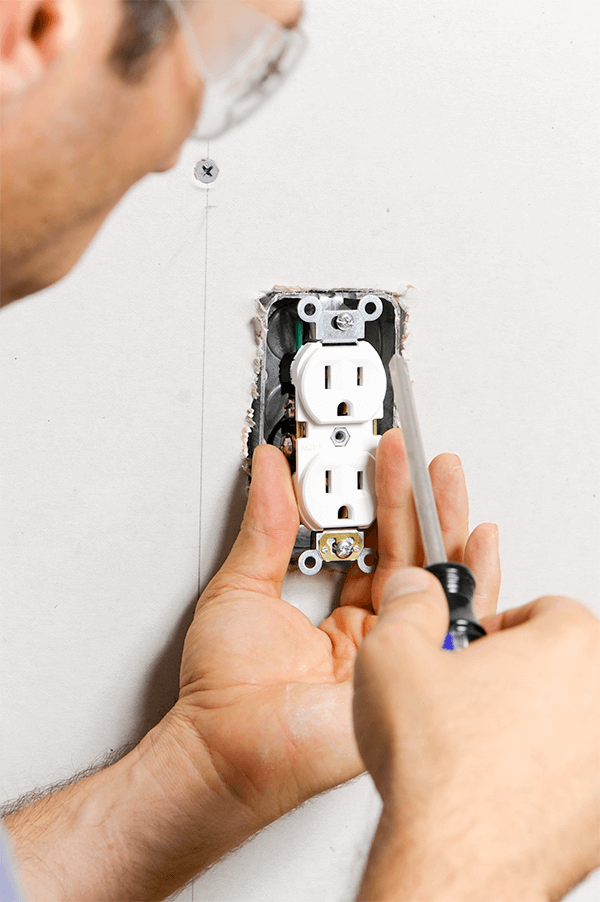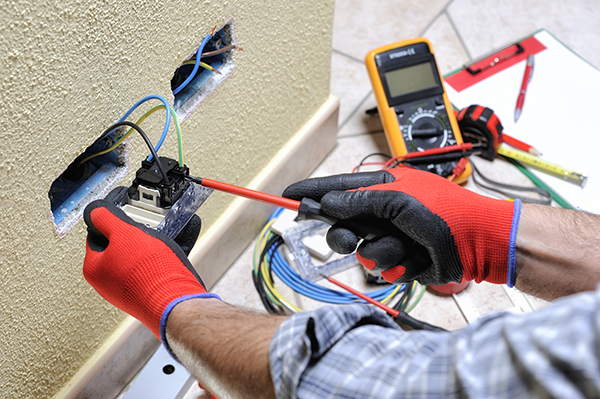Tips for Testing Your Electrical Outlet and Troubleshooting Your Electrical Circuit

Updated January 2024
The electrical circuit is one of the most critical systems in a modern home. But as with other systems, it can break down, making it risky and inefficient. Statistics indicate there are more than 50,000 fires and 500 deaths resulting from electrical fires annually. Here is an outline of how to test a circuit and what to do when you spot electrical faults.
Gather the Right Tools for Electrical Testing
Before you begin testing, determine the tools you’ll need. You can utilize different types of devices to test the outlet. Some of the tools you can use include non-contact testers, continuity testers, and voltage analyzers. They are inexpensive to acquire and have unique features for different applications. However, we shall focus on the multimeter for testing circuits.
The multimeter, as the name suggests, has features and configurations for a wide range of applications. You can test AC/DC circuits, as well as the voltage and current.
Multimeters are affordable and accessible but may vary in quality depending on the manufacturer. It may take some time to learn all its functions. When testing an outlet, however, it is simple to use and one of the most versatile devices for electrical analysis.
It is always wise to be careful when testing the electrical system. Hold both of the multimeter metal tips with one hand. That way, you prevent electricity from going through other areas of your body in case of an electric shock.
It is safer to insert the metal rods in the neutral slot before the live one. There is a greater risk of shock as the current can pass through your body. Never allow the metal tips to touch. If you spot sparking, consider scheduling an appointment with an electrician.
Contact Brennan Electric today
Conduct a Visual Inspection for Fraying Wires
Fraying wires pose serious fire and electrical shock hazards. Make a point of visually inspecting the wiring for defective cables. The main culprits are rodents and damage resulting from unprofessional installations.
Additionally, NEC (National Electrical Code) standards require homeowners to install tamper-proof receptacles. Their purpose is to protect outlets that are within reach of children. They come with a barrier in the slot that keeps children from poking things into the receptacle.
To test the receptacle, you don’t have to use the multimeter. When performing a visual inspection of the wires, check if the tamper-proof outlet has a plastic barrier. If it does not have one, you may talk to the expert electrical team at Brennan Electric in Seattle.
Testing Outlets for Grounding
Modern electrical systems require grounding for enhanced safety. Your outlet may have ground connections, which is a U-shaped slot below the neutral and hot slots.
The ground connection is critical for your house and the valuable electronics you have in your home. When electrical energy builds on a surface of an electrical device, it can increase the risk of a severe shock. That is because the current is trying to find the shortest path to the ground.
In modern systems, grounding connects all the metal conductors in an appliance. When there is arching and short circuits, the ground connection dispels excess energy to the earth. As a result, both the occupants and the valuables in your home are protected.
Even if your electrical system is grounded, the outlets may become defective with time. You can test the ground outlet by placing the black rod of the multimeter in the ground slot. Ensure the device is set to AC, and then put the red rod in the neutral slot.
If there is a significant reading, it means the outlet is faulty or not grounded properly. It is advisable to avoid using the outlet as it may damage valuable electronics. Use it only after an inspection by an electrician. You can call Brennan Electric for timely services in Seattle.
Testing Outlets for Improper Connections
Some connections in your home may be faulty. One problem that may occur is a reversed polarity. In an alternating current, appliances and lighting can work despite the reversal of connections, but it can be risky for some of your electronics.
You can test for polarity by placing one of the multimeter rods in the neutral and the other in the hot socket. If there is a reading, it indicates the polarity is correct. It means the current is moving from the neutral to the hot slot.
Why Plugs Are Falling Out of the Receptacle
One issue you may encounter while using an appliance is a plug deteriorating with time. The metal sections can succumb due to continuous exposure to electrical arcs. If you notice the appliance’s plug falling out, it is usually a sign of a short circuit in the outlet.
If you don’t fix the plug, the metal prongs will deteriorate, causing more sparking and electrical arcs. The contact can weaken and may increase the risk of a fire. It is safer to opt for a replacement. You can consult Brennan Electric’s team for outlet replacement in Seattle.
Signs of a Failing Electrical System
It is always wise to take timely action whenever you detect faults in your electrical system. One of the indications of a malfunctioning circuit is flickering lights. You may experience the problem if the receptacle for the switch has improper connections.
Bulbs could also flicker when multiple appliances are running. In such instances, it is most probably an issue to do with the electrical panel. A professional electrical inspection will verify the source of the problem.
If there is buzzing inside the receptacle, it could be an indication of electrical arcing. It may be accompanied by browning and discoloration of the outlet. The discoloration shows the defect is at an advanced stage and requires a replacement.
Do You Need an Electrical Upgrade?
Your electrical circuit may not have the capacity to handle the many appliances we use today. An outdated electrical system tends to have wiring that is prone to overheating. Additionally, connections may deteriorate to the point they can cause a fire.
One sign of a malfunctioning system is a frequently tripping circuit breaker. Generally, it indicates the circuit is incapable of handling the electrical load. The most effective solution is to upgrade the electrical panel. You might need more outlets to manage the numerous devices you use frequently.
Outdated electrical systems have inefficient components that can also be risky to your home. They usually have aluminum and rubber insulation. If the house was built before 1980, the electrical system is probably outdated.

Do you frequently use extension cords to connect devices? It may be another sign that the circuit is outdated. Older homes had fewer outlets. In recent years, homes have been using more devices, which increases the electrical demand.
Renovations could be another source of electrical faults. When remodeling parts of the house, you may add connections that do not comply with the electrical code. You may have to rewire to prevent power surges that can damage electronics. For the best results, ensure you consult licensed electricians with experience.
Brennan Electric has highly skilled electricians to troubleshoot your Seattle home’s electrical system. You can depend on our team for lighting fixture installation, panel upgrading, generator systems, and maintenance. Our team has been recognized by Angie’s List for five years in a row. We have flexible appointment scheduling for service that fits your routine. Book an appointment today for exceptional electrical services.

